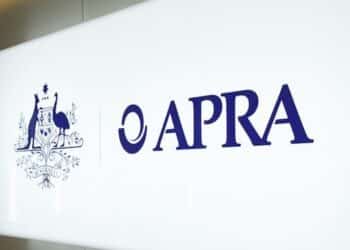Earlier this week, Financial Services Minister Stephen Jones announced that the Australian Securities and Investments Commission (ASIC) levy freeze instated by the previous government would not be extended, signalling a significant increase in the costs charged to advisers.
A day later, that significant boost was indeed confirmed, with the corporate regulator revealing that to recoup the cost of regulating licensees that provide personal advice to retail clients, it will have to charge advisers $3,217 — on top of the minimum levy of $1,500 — instead of the $1,142 they had been charged under the freeze.
The total cost, ASIC said, is $55.5 million in 2022–23.
Advisers are understandably outraged, especially considering the government’s professed objective of enhancing access to affordable advice. The prevailing consensus is that, to fund the levy, advisers will need to raise their fees even higher, rendering professional financial advice even more unattainable.
An added concern is that the advice industry has experienced a substantial contraction of over 40 per cent since 2019 — a clear sign that the industry is struggling, weighed down by the complex and costly regulatory burden.
And while Mr Jones declared, prior to Labor assuming government, that he is intent on fixing the “hot mess” that is the advice industry, it now seems that he is merely introducing an additional layer of hardship to an already fatigued cohort.
The comments from the ifa readership encompass a wide range of emotions, from shock and exhaustion to bitter resentment towards a government that is clearly competent at talking the talk, but less so at walking the walk.
“Yet more costs to pass on to clients, making advice ever less accessible for those who need it most,” said one reader.
Another added: “Government talks, talks, talks about being concerned about consumers who seek advice and the cost of advice … their actions speak for itself. JOKE!”
While a third wrote: “I have been a financial adviser for nearly 20 years and a small practice operator. Like most advisers, I work honestly for clients in their best interest. We have done nothing wrong. Can anyone explain to us why we good guys get punished again for doing the right thing? Why do we have to foot the bill for someone’s faults? Why we are charged per head and not per amount of income?”
A longstanding argument among advisers has been that the ASIC levy is, in plain terms, unjust. The argument holds that while misconduct is often committed by unscrupulous, mostly unlicensed individuals, it is the honest, compliant, and law-abiding advisers who bear the brunt of the financial burden.
Moreover, advisers rightfully question the whereabouts of the exorbitant sums of money ASIC has collected from the banks.
The Financial Advice Association Australia (FAAA) joined the chorus of voices on Thursday.
Apart from branding the ASIC levy jump “extremely concerning”, FAAA chief executive officer Sarah Abood asked what happened to the millions collected from Westpac in April 2022.
Namely, in its latest Cost Recovery Implementation Statement, ASIC has estimated expenditure of $18.2 million in 2022–23 on enforcement activity in the financial advice sector, yet recoveries are only budgeted at $2.1 million.
Ms Abood argued that financial advisers appear to be funding litigation costs against large institutions while the fines end up in consolidated revenue.
“ASIC was successful in court against Westpac in April 2022, with $113 million in penalties being awarded in this single case,” said Ms Abood.
“What has happened to those penalties? Have they simply gone into consolidated revenue? If that is in fact the case — that financial advisers are funding ASIC action against these participants, and yet the government is keeping all the proceeds — then this breaches really fundamental principles of fairness and equity.”
These discrepancies also raised questions among our readers in the comments section on ifa. Some even openly admitted that they had no choice but to shut up shop, as they struggled to stay afloat amid the chaos and disorder.
One ifa reader wrote: “As an ex-practitioner at the very small end of financial advisory services, I had to leave. I felt I was paying ASIC and the government for their ineptitude. Because they failed to make good law, there have been so many changes and each change costs practitioners. Those of us not specialising in the planning side with limited licenses were ripped off the most. Same fees but with lower opportunity to provide service due to limited license. The past decade has been a prodigious exercise in futility. Now arriving back at a point where the rules have to be relaxed to encourage advisers back. Thanks, but NO thanks!”
Considering the flaws detected in the model used to calculate the levy, FAAA has now issued a demand for the government to “urgently reconsider” the removal of the freeze and warned that if it failed to do so, it is the Australian consumers that will ultimately bear the costs.
This is not the first time Mr Jones has disappointed the advice industry.
Namely, it took Mr Jones six months to announce the government’s response to the Quality of Advice Review, and when he finally did, he chose to do so in front of a small audience of superannuation fund CEOs and senior industry executives — a move considered a flick of the middle finger at advisers.
The response itself was quite underwhelming, with the minister announcing yet another round of consultations, even on straightforward recommendations such as the removal of statements of advice (SOAs) — a measure anticipated to bring substantial relief for advisers.
Once again, the minister failed to provide a specific timeline. As a result, it remains anyone’s guess as to when, or even if, SOAs will undergo any meaningful alteration.
So, the agony continues.
The minister hasn’t been very responsive to trade media, perhaps because he knows we’re the ones asking the tough questions. But, with the ASIC levy representing another slap in the face for advisers, we feel the need to rally the government to walk the walk and fix the “hot mess” that regulation alone has created.




[quote=Kevin] Would any other profession tolerate this? [/quote] No Kevin, they wouldn’t and don’t. We do because everyone likes to complain but we fear that if we speak out we will be targeted by the regulator. This is OUR profession, and we are letting other non-stakeholders tell us how to run it. How is this good for society…does medicine allow others to tell them how they should do their work, how to treat illness and care for patients? NO. Does Law allow others outside the profession to dictate how they should defend a client etc? NO. But they are very quick to tell us how to do our work as if they are the experts, yet they know nothing about sitting in front of clients and helping them receive the financial advice they so crave, but they seem to think they know what we know. We would be arrogant enough to tell them how to do their work, but they, the Lawyers and lawmakers are so quick to step in the ring and tell other professions how they should run their profession…they always have, all through history… This, my friends, is what we have to stand up and fight against…this is what others like Medicine have done, accounting, engineering, etc. (As a matter of interest, they don’t say a lot to Engineers because they struggle to understand the complexities of mathematics, physics etc.)
Steve Jones’ intentions are now clear as day. He’s part of the cohort of pollies and super fund CEOs out to cull independent advisers. Why would he be silent on this increased levy? Why did he take his own sweet time handing down his assessment last month and then firstly present to his super CEO mates instead of advisers? Of course, we all know the answer. He’s just another politician interested more in sound bites and re-election than helping anyone like consumers or advisers – just like all the other politicians. He certainly won’t be taken seriously in adviser circles any more. I’d would say he should be ashamed of himself for his behaviour over the past 12 months but, then, what use is it – all politicians are shameless and he’s proven he’s as useless and self-absorbed as the rest of them.
Stephen Jones (aka Minister for Industry Super Funds) is only concerned about his next job at IFM.
Where is the accountability of ASIC? Their websites are indecipherable at AFSL level and now they claim they require the same level of resources for industry regulation with nearly half of its participants now departed. That defies mathematical logic.
At least it keeps the unemployment rate low!
If you didn’t have to waste admin time chasing up Annual Fee Renewal Consent Forms (that don’t exist in any other nation on earth), you could afford to pay the increased levy.
had a gutful – vote them out next election – simple
So let’s assume that the ISN get their carve out, and as a result, a couple of years down the track we get another RC, and then the ASIC IFM blows out to $500m, based on the current ridiculous funding model, we would all be up for $35k each!!! This is nothing but a Govt. rort that needs to be articulated to the wider public. Jones has failed us like all before him.
MP Stephen Jones has been sitting on this for more than 12 months – clearly demonstrates that he does not care 1 iota for the Advice Community.
Presumably the Industry super funds won’t need to pay the levy as they don’t have advisers.
Get a politician to ask a question in Parliament
Would any other profession tolerate this?
I wonder what the QAR recommendations impact will be in this regard. If “non-relevant” providers* become the bulk of advisers in future – providing simple, non-complex (why didn’t we think of this before?) and largely non-regulated advice, will their non-licensees be required to pay an ASIC fee per “non-adviser”?
*George Orwell would be so proud of the terms that the government and consultants in our business have come up with over the years to completely bamboozle the customer. My previous favourite was converting the relatively understandable Deductible/Non-Deductible super contributions into Concessional/Non-concessional.
Yes, the terminology around concessional/non concessional always gobsmacked me as a prime example of politicians needing to get a real life/job – what absolute stupidity to change from a completely understandable deductible/non-deductible terminology for no discernible reason. Confuse and divide – these politicians need a good [b]swift kick[/b][i][/i] up the behind (or a [b]sacking[/b][i][/i]!) for wasting tax payer dollars making these unnecessary fanciful changes that do nothing but confuse.
Why don’t associations educate the broader media and public so they understand too? Theft and uniquely Australian theft again a profession trying to help people, instead were bullied taxed and fund our own litigation. Disgraceful and disgusting
So yet again advisers are funding an organisation which can best be described as incompetent. I have spent 7 or so hours trying to get ASIC to clarify something in one of their guidance sheets, I have spoken to 8 different people in different sections who say their section doesn’t deal with this and so they refer it to another section.. I have no answer. It should have been answered in 5 minutes with competent staff. Perhaps there should be a full independent review of ASIC before advisers are asked to pay more. Compare this to the ATO where registered tax agents pay $731 and BAS agents considerably less. It seems impossible to justify ASIC’s fees when making this direct comparison. It is time that the whole ASIC regime was looked at objectively. What do we get from ASIC that registered tax agents do not get from the TPB? Time for change.
Don’t fall into the trap of “balancing revenues and costs” of ASIC, it is a federal agency where all staff members are already paid by government. It cannot be insolvent like us financial advisers after paying this meaningless levy.
Get your facts right FED – UP…..we protested but this was allowed to happen under the Liberal Government trying to cull advisers in the O’DWYER/Friendly Association fiasco…..history demonstrates that Bureaucrats will not give up a tax once ingrained.
Aren’t you friends with the Minister? You get them elected? Surely you can stop this farce?
Yes, the agony rolls on…
The solution to the ASIC adviser levy mess is not reimpose the “freeze”, as belatedly suggested by FAAA. The solution is to get rid of it altogether. ASIC’s costs should be covered by taxes on the consumers they are supposed to be protecting, and fines on the wrongdoers.
ASIC needs to stop persecuting honest, ethical, professional advisers. And they need to stop charging them for the priviledge of being persecuted!
While I don’t think advisers should be having to pay for a regulator that for the main has to fix the problems initiated by the big end of town, logic also tells me that if a fee rise of $2,000 is cause for you to close your business then you were going to do it anyway.
For an adviser with 100 clients, this is $20 per client. Yes it is an unneccesary tax, but not the end of the world.
Its just another cost blow out on top of PI, Cyber insurance, Superannuation Guarantee, Wages, Software providers subscriptions. Et cetera. It simply means we have to put our fees up and that’s what the government is supposed to be addressing? How is this helping reduce the cost of advice? I’m putting my fees up – if you don’t you wont survive.
The profession has already contracted over 25% a further disincentive and unfair tax is bs. Just another catalyst. Add on unknown costly in 24 and the fact estimates have historically been half the actual levy also factor in heavily. Just another snout in the trough and who pays? Clients. Don’t then ask why advice is expensive
Sure, if you say so ASIC Surveillance Officer no. 422
100% correct, but not one bit surprised, this forum reads the room well, just follow the money trail all the way to Canberra
Apart from the injustice of we “chosen few” still fighting the good fight of advice being asked to pay for the sins of the past, including unlicensed “advisers” and the big insto’s, since when does a government instrumentality have to be funded by constituents, rather than via consolidated revenue? What’s even more galling is that it would appear that, while ASIC fines go into the public purse, advisers are forced to fund ASIC’s activities.
The shameful silence from the AIOFP is worth noting. They seem enamoured over the Minister and the ALP because they give the presence of listening to them. It is unedifying to observe.
As to the ASIC tax, the fact that wholesale advisers escape it is illustrative of how the government and ASIC just have no idea. They should be promoting advice which has consumer protections, but instead they tax it harder.
Lastly, as a sole financial planner with my own licence, being taxed $4,500 is unbearable when there is also the compensation scheme I need to fund, and PI insurance, and unnecessary audits due to the AFSL.
Government is the problem, and Minister Jones is driving small businesses to closure.
Too tired and frustrated to comment. Death by a thousand levies.
And it discriminates against advisers who work 2,3,4 days a week – and who are they usually?, women! We have two valued part time advisers, both mothers who can only commit to part time at this stage of their life. It hardly makes it attractive for financial planning businesses to have part time advisers when it costs this much to have them registered, no matter how many clients they are actually able to look after.
Spot on, with all of the other combined costs – it just eliminates part-time as an option for a Professional Adviser. How could any business employ a part-time adviser and not run as a loss? This is exactly why the Government have their heads in the sand and are destroying the workplace, rather than incentivising. But I guess they don’t care 1 iota with record employment.
Where is our FAAA?
They take my money every year, but I never see or hear them standing up for me on these types of matters?
The Financial Advice Association Australia (FAAA) joined the chorus of voices on Thursday.
Apart from branding the ASIC levy jump “extremely concerning”, FAAA chief executive officer Sarah Abood asked what happened to the millions collected from Westpac in April 2022.
Namely, in its latest Cost Recovery Implementation Statement, ASIC has estimated expenditure of $18.2 million in 2022–23 on enforcement activity in the financial advice sector, yet recoveries are only budgeted at $2.1 million.
Ms Abood argued that financial advisers appear to be funding litigation costs against large institutions while the fines end up in consolidated revenue.
“ASIC was successful in court against Westpac in April 2022, with $113 million in penalties being awarded in this single case,” said Ms Abood.
“What has happened to those penalties? Have they simply gone into consolidated revenue? If that is in fact the case — that financial advisers are funding ASIC action against these participants, and yet the government is keeping all the proceeds — then this breaches really fundamental principles of fairness and equity.”
Is Minister Jones testing us?
He wants us gone altogether. His vision is for industry super to be the only provider of advice in the country. That way, the funding for his party’s campaign at the next election is secured.